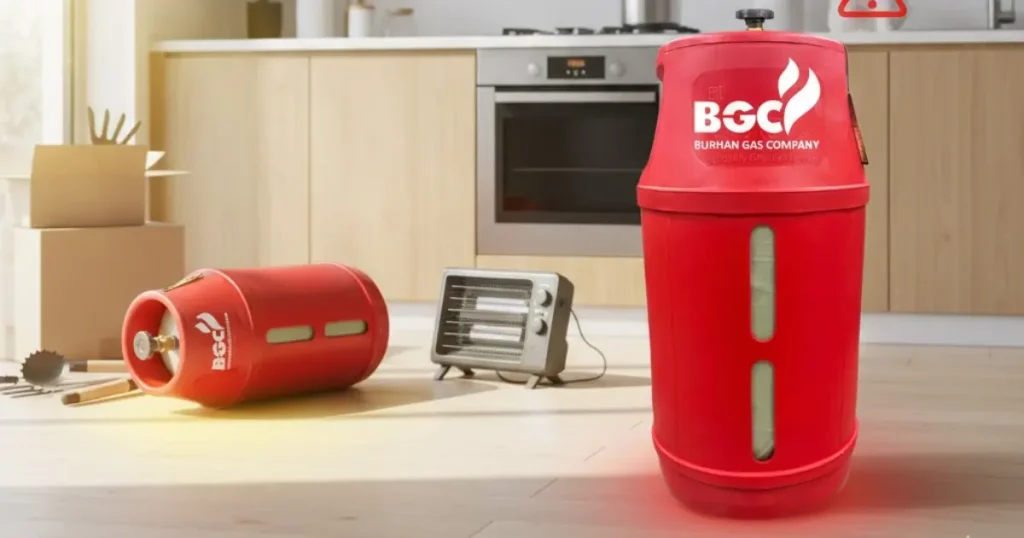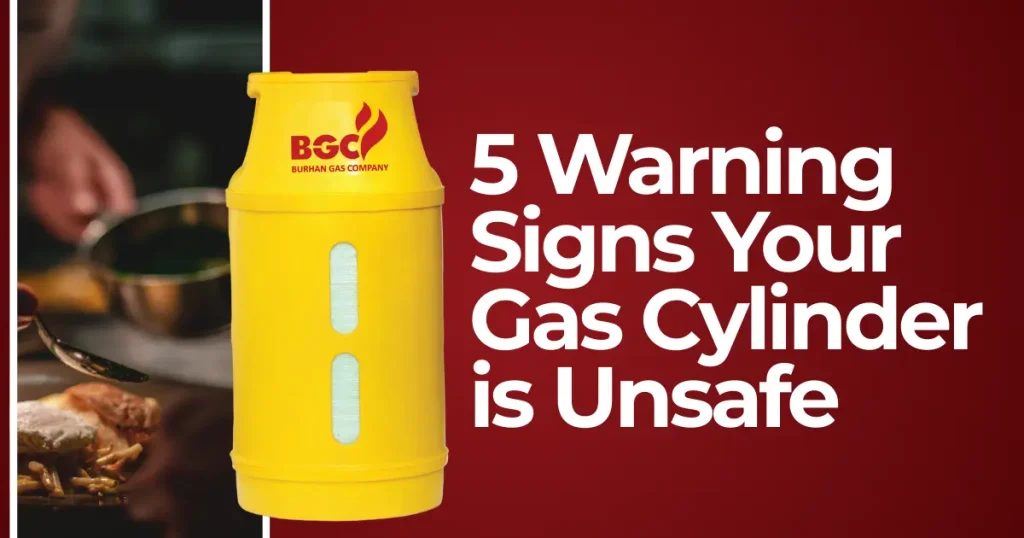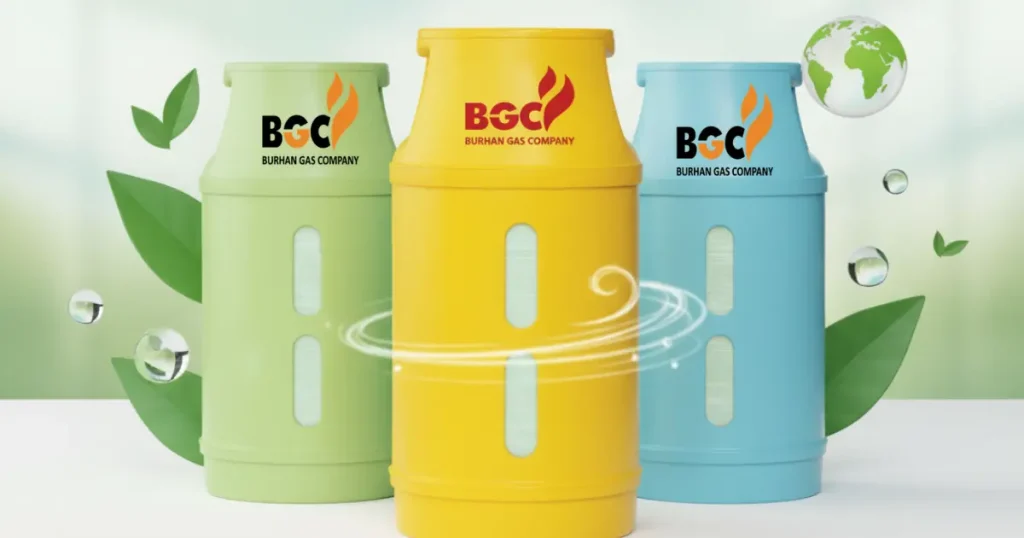So you’ve upgraded to a fiber LPG cylinder—good choice. They’re lighter, don’t rust, and you can even see how much gas is left. But what many people don’t realize is that composite LPG cylinders need slightly different care than traditional metal ones.
Most issues people face—like leaks, damage, or reduced lifespan—happen simply because they treat fiber cylinders the same way they treated metal ones. The truth is, while fiber cylinders are durable, they aren’t indestructible. Some everyday habits can quietly harm them over time.
Here’s a complete guide to the most common mistakes people make—and how to avoid them.
Storage Mistakes That Reduce Safety
Leaving It in Direct Sunlight
Fiber cylinders don’t like direct sunlight. The UV rays can weaken their outer coating and shorten their life. Always store your cylinder in a shaded, cool, and well-ventilated spot—a ventilated cabinet or corner away from windows works best.
The Closed Cabinet Problem
Never keep your cylinder in a sealed space. LPG is heavier than air and can collect at the bottom in case of a leak.
Fix: Make sure your storage area has ventilation holes or an open front.
Lying the Cylinder Down
Fiber cylinders are designed to stand upright. Tilting or laying them down puts pressure on the valve and can lead to leaks.
Rule: Always store and use your cylinder upright on a flat surface.
Too Close to Heat Sources
Keep your cylinder at least 1–1.5 meters away from stoves, ovens, or heaters. Heat increases internal pressure and can weaken seals over time.
Storing Near Sharp or Heavy Objects
Avoid stacking boxes, tools, or heavy items near or on top of the cylinder. Sharp edges can scratch or puncture the protective layer.
Exposure to Chemicals or Sprays
Insect sprays, detergents, or acidic cleaning chemicals can react with the composite surface.
Tip: Keep such items away, and clean only with mild soap and water.

Handling Mistakes That Cause Damage
Being Careless Because It’s Light
Don’t drag your fiber cylinder across rough floors or drop it roughly. Impacts can create invisible micro-cracks.
Handle it like a water cooler bottle—firm grip, careful movement.
Lifting by the Valve
Never lift the cylinder by its valve. It stresses the seal and can cause leaks. Always use the built-in handles or hold it from the base.
Attempting DIY Repairs
Never try to fix leaks or loose valves yourself. Contact the manufacturer or authorized service center—they have proper tools and training.
Unsafe Transportation
When transporting in a car or vehicle:
- Keep the cylinder upright.
- Ensure good ventilation (windows slightly open).
- Never leave it inside a closed car in the heat.
Usage Errors That Lower Performance or Safety
Ignoring Gas Level Visibility
One of the biggest benefits of a transparent LPG cylinder is that you can easily check how much gas is left. Make it a weekly habit to glance at it.
Ignoring Visible Damage
If you spot cracks, scratches, or discoloration, don’t ignore them. Get the cylinder inspected by a professional.
Using Wrong or Worn-Out Regulators
Only use regulators approved for fiber LPG cylinders. Replace damaged ones and check for cracks every few months.
Over-Tightening the Regulator
Too much force can crack the valve neck. Hand-tight is enough—then check with the soapy water test for leaks.
Using Old or Low-Quality Rubber Hoses
Replace your LPG hose every 1–2 years or sooner if it feels stiff or cracked. Always use certified, heat-resistant hoses of proper length.
Skipping Monthly Leak Tests
Mix soap with water and apply it to joints monthly. Bubbles = gas leak. Tighten or replace parts if needed.
Refilling at Unauthorized Stations
Never refill from roadside vendors. Always go to authorized refilling stations—unauthorized refills can damage the valve and compromise cylinder safety.
Using Expired Cylinders
Even fiber cylinders have a service life—usually 15–20 years. Check the manufacturing date and retire them when due.
Maintenance Habits That Keep It Safe Longer
Not Cleaning the Cylinder
Dirt hides cracks. Wipe it monthly with a damp cloth and mild soap. Avoid harsh chemicals.
Ignoring Cloudy or Yellowed Areas
If the transparent body becomes cloudy or changes color, it might signal material degradation. Get it checked.
Not Inspecting O-rings and Seals
Inspect the valve’s rubber O-ring during each cylinder change. Replace if it looks cracked or flat.
Skipping Professional Checkups
Every 1–2 years, have your cylinder inspected by a certified technician, especially if it’s been dropped or exposed to high heat.
Not Checking Hose and Regulator Together
Always inspect the entire setup—cylinder, regulator, and hose—at once. Your system is only as safe as its weakest point.
Misconceptions That Cause Unsafe Practices
“It’s Explosion-Proof—So I Don’t Need to Worry”
Fiber cylinders are safer, not risk-free. Gas leaks are dangerous, regardless of the cylinder type used.
“Lighter Means Less Gas or Pressure”
Wrong. They hold the same amount and pressure as metal cylinders—the weight difference is just the body material.
“I Can See Gas Leaks Because It’s Transparent”
Transparency shows the level, not the leakage. LPG is invisible—always test for leaks with soapy water.
“They Don’t Need Distance from Heat”
The gas inside still reacts to heat, so maintain the same safety distance as traditional cylinders.
“Any Appliance or Hose Will Work”
Always use appliances, hoses, and regulators that are approved for use with LPG. Mismatched fittings can cause leaks.
What You Should Actually Do
Weekly Quick Check
- Look at the gas level
- Ensure it’s upright and stable
- Check that nothing flammable or heavy is nearby
Monthly Detailed Check
- Clean the surface
- Inspect for damage or cracks
- Check the hose and regulator condition
- Perform the leak test
Every 3–4 Months
- Inspect O-rings and valve seals
- Ensure ventilation in the storage area
Yearly
- Check service life and certification
- Consider replacing the regulator (every 3–5 years)
- Get a professional inspection
During Transport or Refill
- Use the valve cap
- Keep upright and ventilated
- Only refill at authorized centers
In Case of Emergency
If you smell gas:
- Don’t turn on/off electrical items or phones.
- Open windows and doors immediately.
- Close the regulator.
- Move the cylinder to open air if possible.
- Call the gas company or fire service from outside.
If damaged:
- Stop using it, move it outside, and call your dealer or manufacturer.
Final Thoughts
Fiber LPG cylinders are the future of safe cooking and energy use in homes. They’re light, modern, and reliable—but they still demand proper care. Most accidents happen not because the cylinder failed, but because someone didn’t follow the right steps.
A few minutes of monthly attention can prevent serious risks and extend your cylinder’s lifespan for many years. Check your setup today—because smart safety is real safety.





